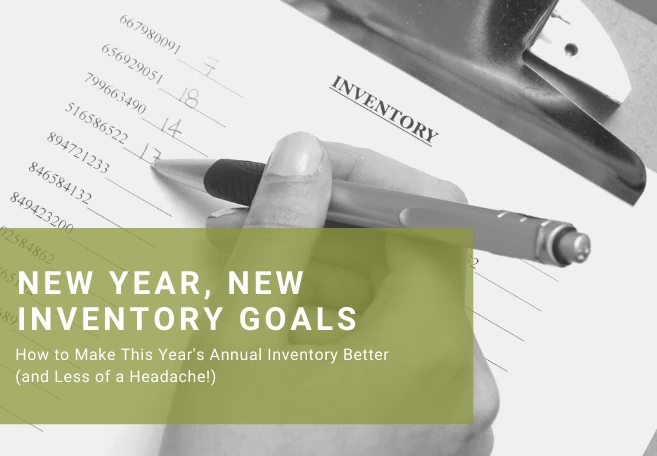Asset Tagging – The Right Tag for the Right Job
What is the asset you want to tag and under which conditions is that asset used/stored?
Because different asset tags meet different conditional needs.
How’s It Work?
You see, asset tags are basically extra-clever labels bearing a barcode. The barcode contains visual, scanner-readable data about that specific item, displayed as parallel lines of varying widths and spacing. While the most common example of barcodes is found in the UPC symbols printed directly on consumer product packaging, barcodes for fixed assets are printed on labels, and those can be made of anything from aluminum to polyester. The information for each item is scanned, stored, updated, and modified using a scanning device.
Asset tags can be used on any fixed asset you want to inventory — indoors or outdoors — from computers and simple office items to fire extinguishers, signs, large equipment and more. The downside is that they can lose readability over time, depending on their use and environment. And typically, you’re going to want to make sure your asset tag enjoys a long, healthy life. (No one wants to return to the asset, just in time to do a business-critical inventory, only to find out the tag’s vital information has peeled off, worn away, gotten corrupted, or faded out of existence.) So it’s important to make sure your item is sporting the right tag for the right job.
Tailor Your Tags!
Yes, how and where you plan to use the tag helps determine what kind of materials the tag should be made of and the features it should have.
When it comes to asset tagging, you have options like:
- Polyester, polypropylene and vinyl tags (generally selected for indoor use)
- Foil and rigid anodized aluminum tags (durable and appropriate for outdoor use)
- UV-protected tags for outdoor or sunny indoor areas
- Tamper-resistant tags that break-apart if someone attempts to remove them
- Removable tags, for short-term assets
- Tags designed specifically to attach to rough surfaces
- Heat- and cold-resistant tags
- Tags designed to be durable against regular cleaning or caustic environments
- Specialty tags for certain industries
As you can see, there really is an asset tag for every occasion!
Tag: You’re It!
So when it comes to choosing the ideal tags for your own assets, there are just a few questions you’ll probably want to address. They include (but are not limited to):
- Is the asset surface plastic or not?
- Is the asset surface smooth or textured?
- Will the asset be indoors or outside?
- How much heat or cold does the asset typically experience?
- How much sun exposure will it receive?
- Will the asset tag come into contact with cleaners or other substances that might erode the tag?
- Will the asset be handled a lot?
One Tag to Stick Them All?
Okay, we understand. These are a lot of details. Maybe you don’t want to spend time thinking about labels. Maybe you really just want a dependable, all-purpose asset tag to use for the widest array of asset tagging circumstances…
We hear you. In that case, we’d recommend using a barcode tag with the following features:
- Made of polyester
- Scratch-resistant
- UV-protected
- Heavy coat weight glue
- Two inches long by one inch high
Keep in mind this may not be appropriate for all items, but it should serve you well for many assets.
And What About Radio Frequency ID (RFID) Tags?
For the greatest majority of your fixed assets, barcode labels will be the perfect choice for your inventory needs. They’re highly affordable, effective, and (as you noticed) there’s a label to suit every asset type. But we’d be remiss if we didn’t mention here that RFID tags can also be appropriate for assets under certain circumstances.
RFID tags use an integrated circuit and antenna to pass data to a reader via radio waves. You’ll see these tags on certain equipment, in credit cards… even in E-ZPass toll transponders. The tags contain both read and write capabilities and store more data than barcode tags. RFID tags can also be read at a distance (hello, E-ZPass!), without contact or line-of-sight. Note, though, that proximity to metal and water can sometimes interfere with the readings.
RFID tags work when an RFID reader sends out electromagnetic energy, then the antenna on the tag draws in that energy and routes it to the micro-chip containing the information. That information is what gets transmitted back to the reader. Some RFID tags contain a battery that transmits this data at all times. So, because the data is in real-time and the tags are easy to scan at distances, RFID can be a smart choice for tagging:
- Hard-to-reach assets
- Difficult-to-reach asset tags
- Assets that shouldn’t be handled (like items that are fragile, containing caustic substances, etc.)
- Highly-mobile assets
- Important or valuable assets
Quite frankly, if price were not a factor, most people would choose RFID in the form of an RFID/barcode combo tag, since it puts more information more easily at your fingertips. But because RFID technology (and batteries!) cause it to be more expensive, and cost continues to be a critical factor in asset management, RFID tags tend to be used only in very specific cases.
Don’t Forget the Big Picture
One last thing about asset tags: no asset tagging solution is complete without taking into account whether the tags and scanners you ultimately choose are compatible with your asset management system. AssetWorks’ Scan & Validate, GreenBar and Mobile AMX scanning solutions, for example, not only integrate with both barcode and RFID scanners, they communicate directly with our AMS and AssetMaxx asset management software.
Your asset tags are on the front lines of the asset management process. By choosing the right tag for the right job, you make inventory—and, ultimately, government compliance!—a quicker, more effective job.







